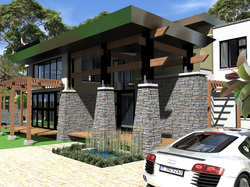 New Residence Mr. & Mrs. Friedman, Johannesburg, South Africa.
New Residence Mr. & Mrs. Friedman, Johannesburg, South Africa.
Ten Reasons to use an architect:
Architects are skilled professionals governed by a strict Code of Professional Conduct set out by the South African Council for the Architects Profession, in order to protect the interests of the public. Architects must also carry appropriate Professional Indemnity Insurance should anything go wrong for the Client.
Architects are skilled professionals governed by a strict Code of Professional Conduct set out by the South African Council for the Architects Profession, in order to protect the interests of the public. Architects must also carry appropriate Professional Indemnity Insurance should anything go wrong for the Client.
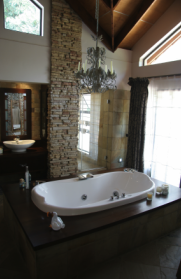 Mr. and Mrs. Bryan, Houghton,
Johannesburg.
Mr. and Mrs. Bryan, Houghton,
Johannesburg.
1. The Client's Tastes and Requirements are of Utmost Importance.
An architect will determine what the client requirements and wishes are, and with that tailor the design to their unique style, in a synergistic manner, without imposing their own taste and preferences.
2. A Cost Effective Project.
An architect is knowledgeable on the best cost efficient products available on the market, and knows how to plan within a budget, in order to ensure that the client gets the best value for money, using good quality fittings.
3. Overall project understanding.
Architects that are involved from the start of the project are in the position to gain a better understanding of the client's particular requirements in order to develop unique solutions and propose ways to reduce costs and increase return on investment.
An architect will determine what the client requirements and wishes are, and with that tailor the design to their unique style, in a synergistic manner, without imposing their own taste and preferences.
2. A Cost Effective Project.
An architect is knowledgeable on the best cost efficient products available on the market, and knows how to plan within a budget, in order to ensure that the client gets the best value for money, using good quality fittings.
3. Overall project understanding.
Architects that are involved from the start of the project are in the position to gain a better understanding of the client's particular requirements in order to develop unique solutions and propose ways to reduce costs and increase return on investment.
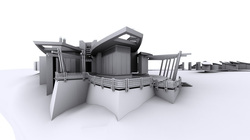 Chalet at Sani Top Mountain Lodge, Sani Pass, Lesotho.
Chalet at Sani Top Mountain Lodge, Sani Pass, Lesotho.
4. Aesthetics.
An architect is concerned with the aesthetic issues, manipulating proportions, alignments, masses, volumes and materials, in order to create a sensible, pleasing building which can be enjoyed by the occupants as well as the public.
5. Seamless Plan Approval with the Authorities.
An Architect is a fait with the current building requirements, as set out by the relevant City Council and designs the building according to these regulations.
An architect is concerned with the aesthetic issues, manipulating proportions, alignments, masses, volumes and materials, in order to create a sensible, pleasing building which can be enjoyed by the occupants as well as the public.
5. Seamless Plan Approval with the Authorities.
An Architect is a fait with the current building requirements, as set out by the relevant City Council and designs the building according to these regulations.
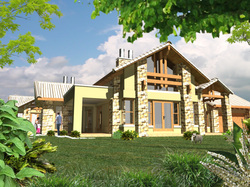 New Residence, Mr. and Mrs. Gouws, Kathu, Northern Cape.
New Residence, Mr. and Mrs. Gouws, Kathu, Northern Cape.
6. Environment.
Buildings designed by architects are sensitive to its surrounding environment and will use all natural elements, topography and views to the best use of the site, within the specific client requirements. With the current emphasis on Eco and Green Architecture worldwide, this can be seamlessly incorporated into the original design.
7. Contractor Advice.
An architect can recommend contractors who might be well suited for the client's particular building project, as well as coordinating a team of specialist consultants to ensure the overall well being of the final product, as required.
Buildings designed by architects are sensitive to its surrounding environment and will use all natural elements, topography and views to the best use of the site, within the specific client requirements. With the current emphasis on Eco and Green Architecture worldwide, this can be seamlessly incorporated into the original design.
7. Contractor Advice.
An architect can recommend contractors who might be well suited for the client's particular building project, as well as coordinating a team of specialist consultants to ensure the overall well being of the final product, as required.
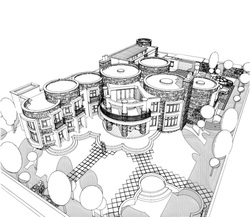 New Residence for Mr. & Mrs. Bakaya, Maseru, Lesotho.
New Residence for Mr. & Mrs. Bakaya, Maseru, Lesotho.
8. Future Planning.
An architect can look beyond the client's immediate requirements to design your building to be able to adapt and extend if necessary, according to the client's changing needs.
9. Functionality.
Architects create environments that are pleasing and functional for those who use or live in them. Such a professional tailors a design to take into account particular needs and locations.
10. Project management.
Architects can manage your project from site selecting to completions, constantly providing advice and solutions to the choices that the client may face, saving valuable time and money, as well as providing complete peace of mind to the client.
An architect can look beyond the client's immediate requirements to design your building to be able to adapt and extend if necessary, according to the client's changing needs.
9. Functionality.
Architects create environments that are pleasing and functional for those who use or live in them. Such a professional tailors a design to take into account particular needs and locations.
10. Project management.
Architects can manage your project from site selecting to completions, constantly providing advice and solutions to the choices that the client may face, saving valuable time and money, as well as providing complete peace of mind to the client.




